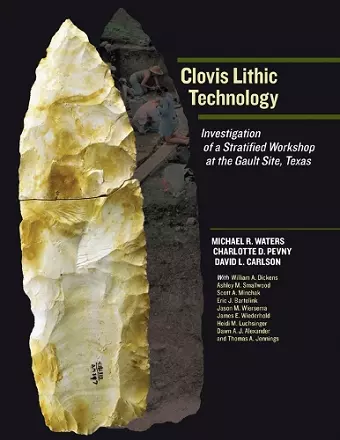Clovis Lithic Technology
Investigation of a Stratified Workshop at the Gault Site, Texas
David L Carlson author Michael R Waters author Charlotte D Pevny author
Format:Hardback
Publisher:Texas A & M University Press
Published:30th Nov '11
Currently unavailable, our supplier has not provided us a restock date

Some 13,000 years ago, humans were drawn repeatedly to a small valley in what is now Central Texas, near the banks of Buttermilk Creek. These early hunter-gatherers camped, collected stone, and shaped it into a variety of tools they needed to hunt game, process food, and subsist in the Texas wilderness. Their toolkit included bifaces, blades, and deadly spear points. Where they worked, they left thousands of pieces of debris, which have allowed archaeologists to reconstruct their methods of tool production. Along with the faunal material that was also discarded in their prehistoric campsite, these stone, or lithic, artifacts afford a glimpse of human life at the end of the last ice age during an era referred to as Clovis.
The area where these people roamed and camped, called the Gault site, is one of the most important Clovis sites in North America. A decade ago a team from Texas A&M University excavated a single area of the site - formally named Excavation Area 8, but informally dubbed the Lindsey Pit - which features the densest concentration of Clovis artifacts and the clearest stratigraphy at the Gault site. Some 67,000 lithic artifacts were recovered during fieldwork, along with 5,700 pieces of faunal material.
In a thorough synthesis of the evidence from this prehistoric 'workshop,' Michael R. Waters and his coauthors provide the technical data needed to interpret and compare this site with other sites from the same period, illuminating the story of Clovis people in the Buttermilk Creek Valley.
ISBN: 9781603442787
Dimensions: unknown
Weight: unknown
256 pages